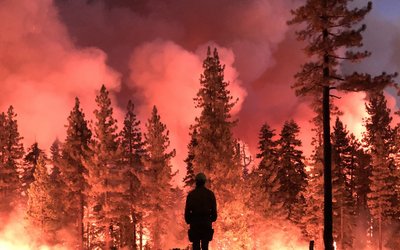
In the Aragón region in Northeastern Spain, high temperature days and large wildland fires are correlated: the five largest wildland fires on record in Aragón did develop under high temperature days. High temperature days are days with high air temperatures and low relative humidity, commonly correlated with heat waves. In a study on wildfires in Aragón, so-called main wildland fires are defined as those over 60 ha. These large fires, 2.5 % of the total number of fires, accounted for 85 % of the total area burned in NE Spain in the 1978–2011 period.
In Aragón, the total annual number of main wildland fires and the annual area burned declined during 1978–2011 for fires during days when temperatures were not high. This illustrates that in the last years, fire suppression resources have improved in technology and training and. For high temperature days, however, the total annual number of main wildland fires and the annual area burned did not decline. From 1978 to 2011, the ratio of main wildland fires under high temperature days compared with fires the rest of the year rose from 0.30 in 1981 to 0.65 in 2008. In a similar way, the ratio of area burned under high temperature days versus total area burned also increased from 0.49 in 1981 to 0.85 in 2007.
High temperature days more and more determine the origin of large wildland fires in Aragón. The annual number of days with these high temperatures increases. The authors of this study warn that in the future we might be expecting larger fires and could face extreme-behavior wildland fires beyond our firefighting capacity. Wildland fires are mostly happening from June to September. Fire season seems to be starting earlier and last longer than in former years: the number of high temperature days in June is already increasing.
Source: Molina-Terrén et al., 2016. Theoretical and Applied Climatology 125: 295–302.
Photo: Paloma A. Rojas (www.flickr.com)








